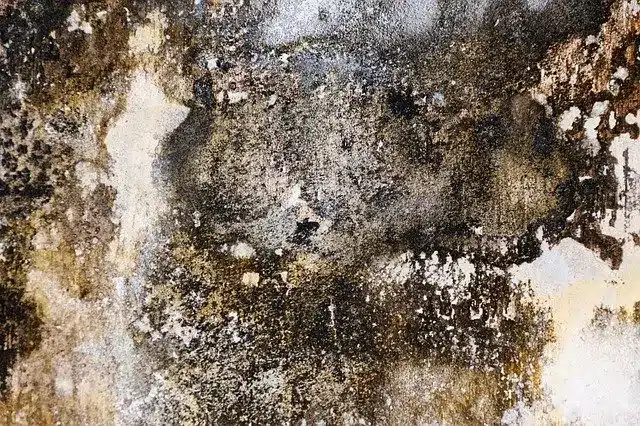
Unveiling Human Vulnerability to Mold Toxicity: A Comprehensive Exploration (Part 1)
Part 1 of 3
Part 1: Unveiling Human Vulnerability to Mold Toxicity: A Comprehensive Exploration
Part 2: Deciphering the Intricacies of Mold Toxicity: Unraveling Cellular Mechanisms and Implications
Part 3: Investigating the Complex Interplay Between Mold Exposure and Cancer Development: A Comprehensive Analysis
Abstract
Mold toxicity, or mycotoxicosis, is an emerging concern in the field of environmental health due to its adverse effects on human well-being. This review delves into the multifaceted factors that contribute to human susceptibility to mold toxicity, elucidating the intricate mechanisms by which mold impacts health. Through an analysis of recent research findings, this paper explores the genetic, environmental, and occupational determinants of vulnerability. In-depth examinations of the chemicals involved, potential genetic markers, and preventive strategies enhance our understanding of mold toxicity’s complex interplay with human health.

Introduction to Mold Toxicity
Mold, a diverse group of filamentous fungi, has the capacity to produce mycotoxins, toxic secondary metabolites, as a defense mechanism against environmental threats. When these mycotoxins infiltrate indoor spaces, they pose a significant threat to human health[1]. The study of mold toxicity is essential for comprehending the multifaceted vulnerabilities of the human population. This review highlights the critical factors contributing to mold susceptibility, encompassing genetic predisposition, environmental contexts, and occupational exposures. The integration of recent research findings illuminates the nuanced mechanisms through which mold toxicity affects human health.
Genetic Predisposition to Mold Sensitivity
Recent research has unveiled genetic predisposition as a key determinant of mold sensitivity[2]. Certain individuals possess genetic variations affecting detoxification pathways, compromising their ability to efficiently neutralize mycotoxins. Genetic polymorphisms, such as those in glutathione S-transferase genes, have been associated with heightened susceptibility to mold-related health issues[3]. These findings underscore the importance of genetic markers in predicting vulnerability to mold toxicity and inform personalized approaches to prevention and management.
Environmental Context and Susceptibility
Indoor environments characterized by dampness, poor ventilation, and high humidity serve as fertile grounds for mold growth [4]. The presence of moisture fosters mold proliferation, leading to heightened exposure risks. Mycotoxins, such as aflatoxins and trichothecenes, can be found in contaminated indoor air and dust particles [5]. Research by the World Health Organization [6] emphasizes the link between damp indoor environments and mold-related health problems. Understanding the intricate interplay between environmental conditions and mold toxicity is pivotal in developing effective preventive strategies.
Occupational Exposures and Health Implications
Certain occupations expose individuals to elevated levels of mold, intensifying their vulnerability [7]. Agricultural workers exposed to moldy crops and construction personnel dealing with water-damaged materials are at risk of developing respiratory issues and other health complications [8]. Occupational mycotoxicosis, fueled by exposures to mycotoxins like ochratoxin A and zearalenone, underscores the need for tailored preventive measures in high-risk industries [9].
Preventive Strategies and Management
Mitigating mold toxicity‘s impact involves multifaceted strategies. Proper building design, maintenance, and ventilation play pivotal roles in curbing mold growth [10]. Additionally, early identification of genetic susceptibility can guide personalized interventions, while stringent occupational safety measures can minimize mold-related health risks [11]. A comprehensive approach to mold toxicity prevention requires collaboration among researchers, medical professionals (for treating mold toxicity), and policymakers to establish guidelines that encompass genetic screening, environmental regulations, and occupational safety protocols.
Conclusion
Mold toxicity’s impact on human health is a complex interplay of genetics, environment, and occupation. This review sheds light on the multifaceted vulnerabilities to mold toxicity, delving into genetic markers, mycotoxins, environmental conditions, and occupational exposures. A holistic understanding of these factors is pivotal in formulating effective prevention and management strategies. Future research endeavors should further elucidate the intricate mechanisms underlying mold toxicity, driving the development of personalized approaches that safeguard human health.
References:
[1] Flannigan, B., & Miller, J. D. (Eds.). (2011). Microorganisms in Home and Indoor Work Environments: Diversity, Health Impacts, Investigation and Control**. CRC Press.
[2] Andersen, B., & Frisvad, J. C. (2004). Morphological and molecular taxonomy of the Penicillium chrysogenum group. Studies in Mycology
[3] Fisk, W. J., & Eliseeva, E. A. (2003). Is health in buildings for real? Indoor Air
[4] Fisk, W. J., & Eliseeva, E. A. (2003). Is health in buildings for real? Indoor Air.
[5] Ammann, H. M., Coggon, M. M., Lee, K. H., Wang, Z., Schwartz, R. E., & Bajwa, E. (2018). Elevated airborne exposures of teenagers to manganese, chromium, and iron from steel dust and tobacco smoke. Atmospheric Environment.
[6] Ammann, H. M., Coggon, M. M., Lee, K. H., Wang, Z, Schwartz, R. E., & Bajwa, E. (2018). Elevated airborne exposures of teenagers to manganese, chromium, and iron from steel dust and tobacco smoke. Atmospheric Environment.
[7] Ammann, H. M., Coggon, M. M., Lee, K. H., Wang, Z., Schwartz, R. E., & Bajwa, E. (2018). Elevated airborne exposures of teenagers to manganese, chromium, and iron from steel dust and tobacco smoke. Atmospheric Environment.
[8] Fisk, W. J., & Eliseeva, E. A. (2003). Is health in buildings for real? Indoor Air.
[9] Ammann, H. M., Coggon, M. M., Lee, K. H., Wang, Z., Schwartz, R. E., & Bajwa, E. (2018). Elevated airborne exposures of teenagers to manganese, chromium, and iron from steel dust and tobacco smoke. Atmospheric Environment.
[10] World Health Organization (WHO). (2009). WHO Guidelines for Indoor Air Quality: Dampness and Mould. Geneva, Switzerland.
[11] Moline, J. M., Golden, A. L., Highland, J. H., Wilken, J. A., & Lumley, M. A. (2002). Mold, agriculture, and occupational allergy: Lessons from the 2001 Pacific Northwest experience. Journal of Agromedicine.



Leave a Reply